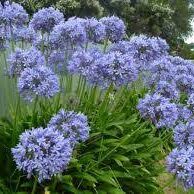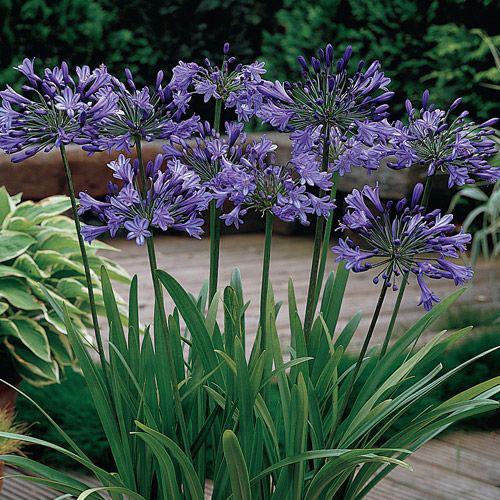Agapanthus Proliferation: Tips for Expanding Your Plant Collection
Agapanthus Proliferation: Tips for Expanding Your Plant Collection
Blog Article
Grasping the Art of Agapanthus Care: Crucial Actions for Healthy And Balanced Development and Dynamic Blossoms
In the world of gardening, the growing of agapanthus stands as a gratifying undertaking for those who look for to nurture these elegant blooming plants. With their striking blossoms and elegant vegetation, agapanthus has captured the interest of gardeners worldwide. Nonetheless, accomplishing optimal growth and dynamic blossoms needs a nuanced approach that includes numerous essential steps. From picking the best range to understanding trimming strategies, the journey in the direction of growing flourishing agapanthus plants is complex and holds the essential to opening the complete capacity of these organic gems.

Choosing the Right Agapanthus Selection

When picking the right Agapanthus selection for your garden, consider aspects such as environment viability, blossom shade, and development behavior. Additionally, take into consideration the climate in your area to make certain the Agapanthus selection you pick can flourish in your specific conditions. Comprehending the growth habit of different Agapanthus ranges is essential for appropriate placement within your garden.
Suitable Growing Conditions
Thinking about the ideal environmental demands is necessary for effective Agapanthus growing. Agapanthus plants are sensitive to cool temperatures and must be safeguarded from frost throughout winter season months.
To ensure healthy and balanced development and vibrant flowers, plant Agapanthus light bulbs at a depth of regarding 2-4 inches and room them 8-12 inches apart. Adding raw material, such as garden compost, to the dirt can boost water drainage and fertility, promoting durable origin development. Mulching around the base of the plants assists preserve dampness and subdues weed development. Routine watering is critical, especially during the growing season, to keep the soil constantly wet but not soaked.
Watering and Fertilizing Tips
Keeping correct dampness levels and providing vital nutrients are crucial elements in the treatment routine for Agapanthus plants. When it comes to sprinkling Agapanthus, it is crucial to strike a balance. These plants prefer consistently moist dirt yet are at risk to root rot if overwatered. During the growing season, water deeply as soon as a week, making sure the soil is well-draining to protect against waterlogging. In hotter environments or during durations of drought, more frequent watering might be essential to maintain the soil evenly wet. Nonetheless, minimize watering in the winter season to avoid waterlogged problems.
Feeding Agapanthus is necessary for promoting healthy and balanced development and prolific blooms. Apply a well balanced fertilizer, such as a 10-10-10 formula, in the early springtime as new development emerges. Repeat this application every 6-8 weeks throughout the expanding period. Avoid excessive fertilizing, as it can result in lavish vegetation at the expense of blossoms. Always this link adhere to the producer's guidelines for correct dilution and application techniques. By following these watering and fertilizing tips, you can ensure your Agapanthus plants flourish and generate dynamic, durable flowers.
Pruning Methods for Agapanthus
Trimming Agapanthus plants at the suitable times and with appropriate strategies is vital for keeping their health and wellness and promoting optimum development and flowering. The optimal time to prune Agapanthus is in late winter or very early springtime before new development emerges.
Deadheading invested flowers can likewise redirect the plant's energy right into creating even more flowers instead than establishing seeds. If you want to gather seeds for propagation, leave some blossoms to dry and mature on the plant.
Bear in mind to make use of clean, sharp tools to make accurate cuts and minimize the threat of introducing conditions. Agapanthus. Routine pruning will assist maintain your Agapanthus looking cool and healthy while ensuring an abundant display screen of beautiful flowers
Managing Common Bugs and Diseases
After making sure proper trimming strategies for Agapanthus, it is vital to resolve typical parasites and diseases that can affect the wellness and vitality of these plants. One typical parasite that affects Agapanthus is the Agapanthus gall midge.
An additional common problem is fungal fallen leave spot, which provides as dark lesions on the fallen leaves. To stop fungal diseases, make sure excellent air blood circulation around the plants, prevent above watering, and eliminate any type of infected leaves without delay. In addition, Agapanthus plants can experience root rot if they are planted in poorly draining dirt. To stop this, plant Agapanthus in well-draining dirt and stay clear of overwatering. By being attentive and taking prompt activity versus insects and illness, you visit their website can aid your Agapanthus plants prosper and produce lively blossoms.

Final Thought
To conclude, mastering the art of agapanthus care entails selecting the best variety, providing excellent growing conditions, appropriate watering and fertilizing, ideal pruning techniques, and dealing with common insects and conditions. By complying with these crucial steps, you can ensure healthy and balanced development and lively blossoms for your agapanthus plants. Remember to routinely monitor and maintain your plants to advertise their general wellness and longevity.
To make sure healthy and balanced find out here growth and lively blooms, plant Agapanthus light bulbs at a deepness of about 2-4 inches and room them 8-12 inches apart. By following these watering and feeding pointers, you can guarantee your Agapanthus plants prosper and produce vivid, long-lasting blossoms.
One usual pest that influences Agapanthus is the Agapanthus gall midge. Furthermore, Agapanthus plants can suffer from root rot if they are grown in inadequately draining pipes dirt. By following these necessary steps, you can make certain healthy growth and lively flowers for your agapanthus plants.
Report this page